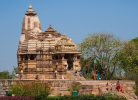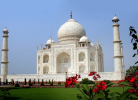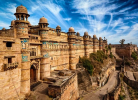Taj Mahal Myths
Taj Mahal is a grand mausoleum known for its Marvelous beauty and is therefore thronged by numerous visitors in a year. This beautiful construction which is considered as the symbol of love has several myths and legends associated with it. Many related stories have been said about it, but none of them have been proven to be true.
These myths and legends related to Taj Mahal increases curiosity in the minds of the people and have created an irresistible mysterious atmosphere that draws tourists in large number looking for the proof or truth behind the myths. Read about the most popular myths associated with the wondrous Taj Mahal at Agra.
- Among all the myths, one of the popular myths is that Taj Mahal has been constructed under the supervision of Italian Architect. It has been claimed by some Italian historians that the Taj Mahal has been designed by an Italian architect. But they could not prove it as the artisan Geronimo Veroneo, whom they claimed to be the architect of the monument was a skilled jeweler and had nothing to do with construction.
- Second most popular myth is the black Taj Mahal. It is said that Shah Jahan had a plan to construct a mirror image of the white marble mausoleum built for his wife Mumtaz, on the other side of the river and to get them connected with a bridge, but he wanted to have it in black marble. He wanted to have this mausoleum built for himself but could not get it completed as his son Aurangzeb deposed him.
- Demolition of Taj is another myth that has been popular. It is said that in 1830, this monument faced demolition. It was under the governor Lord William Bentinck that a crew started the demolition work and auctioned the marble. But he had to stop as he could not find any prospective buyers. Since late 19th century, the miserable period of Taj Mahal commenced. Better care was taken under the project introduced by British Viceroy Lord Curzon to restore and repair every section of Taj Mahal, which was completed in 1908. It became much better by the late 20th century.
- Taj Mahal in the year 1942 got a threat of air attack from German and Japanese air force. In 1965 and 1971, during the Indo-Pak wars the government took measures to protect the monument and thus erected scaffoldings to prevent attacks. Despite all these odds, Taj Mahal has been able to hold its elegance.
- There is one thing that seems different from the rest of the plan is Shah Jahan’s Cenotaph. Mumtaz Mahal’s Cenotaph is the perfect set up at the center of the chamber whereas, Shah Jahan’s Cenotaph looks squeezed in and little higher. Therefore, it raised the myth of asymmetrical Taj.
- There are two stories associated with this legend. Some theorists came up with the view that Aurangzeb placed his father’s cenotaph without caring about the symmetry as he didn’t approve Shah Jahan’s wish of building Taj in the first place. He did so as Islam doesn’t allow any sort of showiness at the time of death. Some others have a diverse view that Shah Jahan’s cenotaph should not have been placed next to his wife’s cenotaph for it would have created disturbance in the whole symmetry which includes the central and burial chamber.
- They also believed that Shah Jahan had a wish to build the mirror image of Taj Mahal in black marble as remains of black marble were found in the abandoned place of Mehtab garden opposite to the white Taj Mahal. Shah Jahan could not fulfill his wish as he was deposed by his own son Aurangzeb and the theorist were with the view that Aurangzeb ruined the perfect symmetry of the Taj Mahal by placing his father’s cenotaph together with Mumtaz’s cenotaph.
- According to the most popular legends, Shah Jahan had commanded to chop off the hands of the artisans and craftsmen who were involved in the construction of this glorious monument so that they may never build such a wondrous monument like Taj Mahal. It is also heard that to prevent the craftsmen to witness any other beautiful object than Taj Mahal, Shah Jahan ordered to take their eyes out of their sockets. This horrible story has been found as false and baseless as there is no evidence to prove that it really happened.
- Taj Mahal also has legends related to its name. One such legend is that it derived its name from the Persian language, which means, "Crown Palace" or "Palace of the Crown". According to another myth, Taj Mahal was named after Shah Jahan’s wife christened as Mumtaz Mahal that means "Crown of the Palace". Taj Mahal is said to be the shorter form of Mumtaz Mahal.
- Another legend behind Taj Mahal's name is that it was originated from the name "Tejo Mahalya," a Shiva Temple. The legend also says that the temple was overtaken by Shah Jahan and then modified as the Taj Mahal.
- Among the several myths about Taj Mahal, one is the sinking Taj! Though the architects took all the precautions during its construction, yet cracks were located in it after four years. The building of Taj Mahal on the bank of Yamuna River was considered as a disadvantage. Therefore, in 1652 measures to repair the Taj Mahal were taken under the rule of Aurangzeb. In 1810, serious cracks were discovered and so decision of renovation and preservation of Taj Mahal was taken by an advisory committee.
- It is believed that the monument was tilting in the direction of the river. The exterior of Taj was intact but cracks were found on its second storey and also in its underground vaults. It is believed that the rapidly drying of River Yamuna will harm the glorious monument in future because the Taj Mahal is upheld on ebony wood base, which requires moisture to preserve its strength and the drying up of Yamuna will lead to sinking Taj.
- Another myth says that Taj Mahal was once a Palace. It is believed that it belonged to a Rajput King and was built in 4th century AD. It was later over taken by Shah Jahan and modified it as Taj Mahal. No evidences are there to support this myth, but it is believed to be true. Professor P.N. Oak of New Delhi has mentioned about this in his book, on the Taj Mahal.
- According to the myth of "theft in Taj Mahal,” many items that belonged to Taj Mahal went missing during British rule. The items included a gold leaf that covered the dome of the Taj, A railing of gold that surrounded the cenotaphs, diamonds were inlaid in the cenotaph, also included a blanket of Pearl , which covered Mumtaz's cenotaph.
- A list of item that were stolen included a door for the entrance of carved jasper, gold leaves at entrance door of carved jasper, gold leaf to cover the cast iron joints in the jail screen everywhere around the cenotaphs, carpets covering the tomb’s interior and coated lamps from the tomb.
- In the late 19th century, under the British Viceroy Lord Curzon a restoration project was held in 1908. As many precious stones were stolen they were unable to get their position back. A large lamp was placed in the chamber of the Taj Mahal.
- The myth of "third graves" of Taj Mahal. It is said the real set of graves are somewhere near the sandstone of Taj Mahal. There are two staircases leading straight to the 17 chambers at the basement. These chambers are laid out on the riverside. The extreme points on both sides have been blocked. The real graves are sited underground; according to the Muslim tradition in order to let the person lying on the graves remain undisturbed. It is still an unknown fact about the third set of graves.
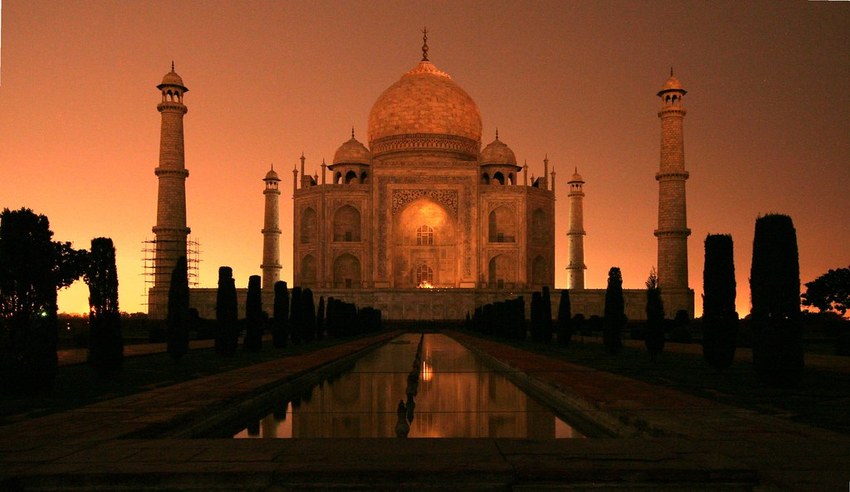
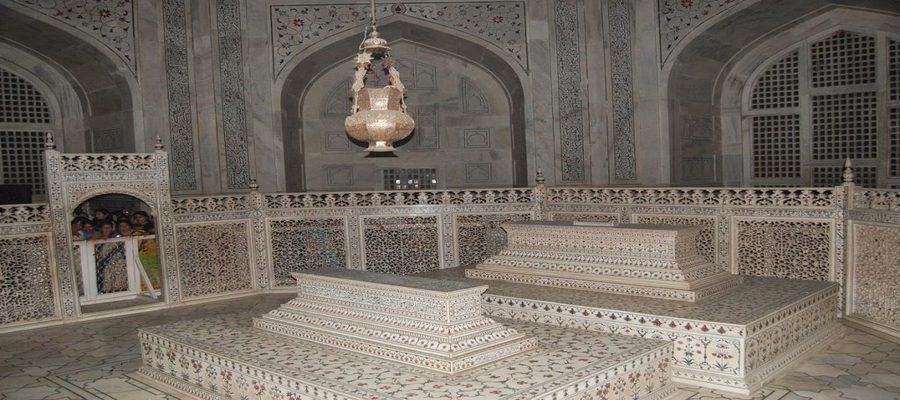

Travelogy India offers an exclusive range of Taj Mahal tour packages that gives an extensive knowledge about the glorious monument. You can take on the Exclusive Taj Mahal Tour which has been exquisitely crafted to cater your travel requirements. You can also get your itineraries customized as per your interest. There are many other Taj Mahal Tour Packages specifically tailored which you can opt for to have an ultimate touring experience.












